Review by Jon Eben Field
When I walked into the Finalé Audio room at TAVES this year, I immediately knew that something special was happening. In the corners of the room were perched speakers that looked like small, white, geometrical mountains with architecture that seemed to gesture towards both stark formalism and high modernism. On the white angular exterior perched a single, tiny black driver on each speaker. Beyond their looks, though, I was struck by something else. This elusive quality is hard to describe and I will likely spend the rest of this review attempting to coax this characteristic into the light. While I sat in the room listening to these speakers, I heard a presence and purity of tone that was a revelation to me. I sat in the room for a long time listening to the records being spun and talking with both Frank Ng and Peter Wolter of Finalé Audio. Out of that conversation emerged a three-week window to listen to the speakers and determine what was actually going on within their small package. Thus my tenure with Finalé Audio’s Vivace Minis began.
The Vivace Minis, which come in black or white, have a small footprint and are designed for smaller rooms or condos (they measure 32.5” in height, 7.5” in width, and 13” in depth). The speakers sport single black drivers that measures 2 ¾” in diameter, but have an in-room frequency response of 50 to 20,000 Hz. I know what you are thinking: “How do they get down to 50 Hz with a 2 ¾” driver?” I wondered about this too. When I wrote to Robert Gaboury of Arteluthe and key designer of the Vivace Mini, he explained that the Mini “borrows from transmission line – which is an air column. When you taper a transmission line, you get a tapered quarter wave design. If you play with the expansion profile and add a compression chamber, you get a horn. The addition of the air cannon transforms the horn into a bandpass hybrid. The goal is to couple the biggest possible air mass to the smallest membrane and make it work as a single entity.” Accomplishing a symbiotic relationship between air mass and driver membrane is the devil in the details work that spells the success or disaster of so many speaker designs.
What really astonished me next, though, was when Robert told me that, “bass is not generated by the driver – only frequencies above 100 Hz. What is noteworthy is that the enclosure loads the driver in such a way that when the driver wants to ‘push out’ the vacuum inside the enclosure ‘sucks it in’ – limiting excursion and distortion.” Some context is necessary here to understand the Mini. With a bass port on the rear of each speaker, the degree of bass will be determined in part by how close to the rear wall each speaker is positioned. But let’s be fair and honest here, 50 Hz is deep for a 2 and ¾” driver, but it is not shake your windows kind of bass. I will talk more about bass later, but feel that for the smaller space and condo scenario that the Mini has been designed for, this amount of bass is ample.
The Vivace Mini cabinets are constructed from two sheets of laminated high-density fibreboard (HDF) and the bass tube within the port is constructed from solid wood. At 26 lbs., the Minis are easy to move around in a room to find ideal listening parameters. The Minis sound good in a number of positions in the room, but to really get the best out of them it is important to experiment with distance from the rear wall (for bass), and the amount of toe-in (for treble extension). But, overall, the Minis are not overly fussy speakers. In my experiments, I found the Minis dissolved into the soundstage most clearly at 6.5 to 7 feet in width, while being located about 18” from the rear wall, with a very mild toe-in. Again, though, I would encourage you to experiment to discover what sounds best in your room with these speakers.
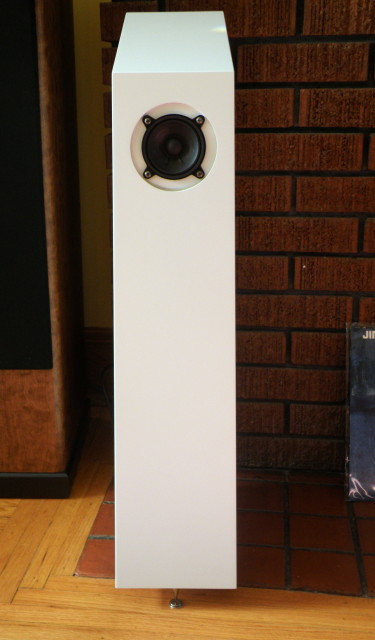 Gaboury explained that “The speaker that influenced my design choices is obviously the original Vivace, which I designed while I was at Gemme Audio a couple of years ago. The Vivace Mini is the ultimate iteration of the basic design. I wanted to push the design as far as I could, and built dozens of prototypes to find the perfect acoustic shape – the same shape that dictated the somewhat unconventional form of the enclosure.” The little enclosures are also capable of delivering another set of unconventional descriptors: “small, efficient and full range.” To achieve these words in a single speaker, Gaboury noted that they had to have a “special driver made in Italy with exactly the proper specifications for the project, namely the proper impedance, Qts and Vas values.”
Gaboury explained that “The speaker that influenced my design choices is obviously the original Vivace, which I designed while I was at Gemme Audio a couple of years ago. The Vivace Mini is the ultimate iteration of the basic design. I wanted to push the design as far as I could, and built dozens of prototypes to find the perfect acoustic shape – the same shape that dictated the somewhat unconventional form of the enclosure.” The little enclosures are also capable of delivering another set of unconventional descriptors: “small, efficient and full range.” To achieve these words in a single speaker, Gaboury noted that they had to have a “special driver made in Italy with exactly the proper specifications for the project, namely the proper impedance, Qts and Vas values.”
The Vivace Minis have been designed with a very specific set of purposes in mind. And it is very important to remind ourselves of these when considering them. As Gaboury said, “As a designer, I would say the most significant feature is that it was designed and built as a global project. Usually, you design a loudspeaker that will fit ‘most’ amplifiers and ‘most’ conditions. The Vivace Mini is different, because I voiced it specifically for Triode Lab’s 2A3 amplifier. This meant that it needed to be efficient, with higher than normal impedance. It was designed to be as small as possible to fit condo living (small spaces), while still being able to reproduce quasi full range sound at low distortion.”
At 92 dB with a 16 ohm load, the speakers are reasonably sensitive and I easily drove them to quite loud listening levels (at times) with a set of Triode Lab 2A3M-II monoblocks that deliver 8 watts of glorious single-ended power (special shout-out to Frank Ng for loaning these amps for the review). These are the same amps that were used in the Finalé Audio room at TAVES to power the Vivace Minis. With a peak watts RMS of 40, these speakers are simply not designed for large, powerful solid-state amps. We are talking about a set of speakers that are built for tubes and, more than this, voiced for a specific design around a specific tube, the 2A3.
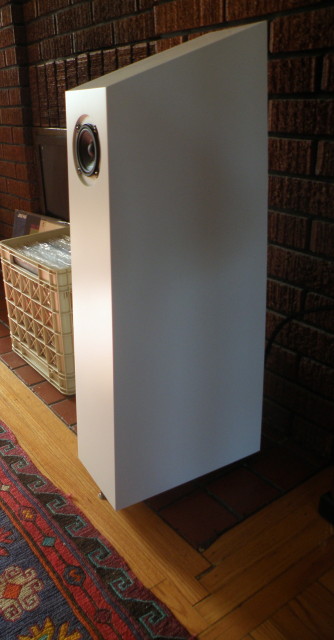 Choosing to stake a place for their speaker around a particular amplifier sound is a bold move and, I have to admit, I admire the moxy of co-partners Robert Gaboury, Frank Ng, and Peter Wolter in doing so. So, the question remains, how did the speakers do at my house? Well, to tell that story, I have to explain a little bit about my psychology of listening. My regular speakers, Tyler Acoustics PD15s, have a 15” woofer, 1” horn, are 98 dB efficient, and weigh 125lbs apiece. I am used to big sound. These speakers, among others, have trained my ears. And they act as a Goliath standing next to the Vivace Minis. So for the first few days with the Minis, I think I was experiencing cognitive dissonance. I was hearing a soundstage that was large and enveloping that spread well beyond the position of the speakers, but I couldn’t get my mind to associate it with the speakers.
Choosing to stake a place for their speaker around a particular amplifier sound is a bold move and, I have to admit, I admire the moxy of co-partners Robert Gaboury, Frank Ng, and Peter Wolter in doing so. So, the question remains, how did the speakers do at my house? Well, to tell that story, I have to explain a little bit about my psychology of listening. My regular speakers, Tyler Acoustics PD15s, have a 15” woofer, 1” horn, are 98 dB efficient, and weigh 125lbs apiece. I am used to big sound. These speakers, among others, have trained my ears. And they act as a Goliath standing next to the Vivace Minis. So for the first few days with the Minis, I think I was experiencing cognitive dissonance. I was hearing a soundstage that was large and enveloping that spread well beyond the position of the speakers, but I couldn’t get my mind to associate it with the speakers.
So the first obstacle that the Minis faced in my listening was purely psychological. I couldn’t figure out how such a small driver was generating as much sound with as much detail as I was hearing. So for the first few days, I was dismayed and kept falling back on the phrase, “Seeing is believing.” And although the empirical thrust in that saying is correct, it needed to be altered for this audio situation because it really came down to: “Hearing is believing.” And the psychological component for me was so hard that I practiced listening to the speakers with my eyes closed. And then, lo and behold, unfettered by my ocular obsession, I was able to accept the music because that is what I heard with startlingly revealing depth, breadth, and dynamics.
These speakers are unrelenting in their pursuit of the strengths (and weaknesses) of source material. They have an uncanny ability to transmit the details being retrieved and transmitted in electronic musical playback. I discovered while listening to these speakers that I had never fully heard the full strengths and limitations of my Shelter 501 mk2 cartridge. The speakers reveal what is in the signal path (for better or worse) and what they like are very high quality and quiet electronics, high quality electronic sources, turntables, and cartridges. When matched with my Triode Lab Au Pre Grande preamp, The Triode Lab 2A3M-II amps find a sympathetic and symbiotic relationship with these relentlessly revealing speakers.
The second obstacle the Vivace Minis faced at my house is that I listen in a fairly large room. With a length of 22 feet and width of 11.5 feet, there is a lot of space to fill with music and sound. The speakers are positioned in the middle of the long wall facing across the width of the room (dictates of the room), so there is a lot of space for the outer edge of the soundstage to drift. I found with the Vivace Minis that they struggled a little bit to fill the room with sound. I often found myself turning things up just that little bit more than I am used to in order to achieve that immersive effect that I enjoy. I suspect that the speakers would have been aided by an earlier reflection from a sidewall in reaching the listening position. But again, this is merely speculation. I did notice that once I got the volume level perfect for a recording that I would very quickly forget about these dynamics and just sit back and spin records late into the evening.
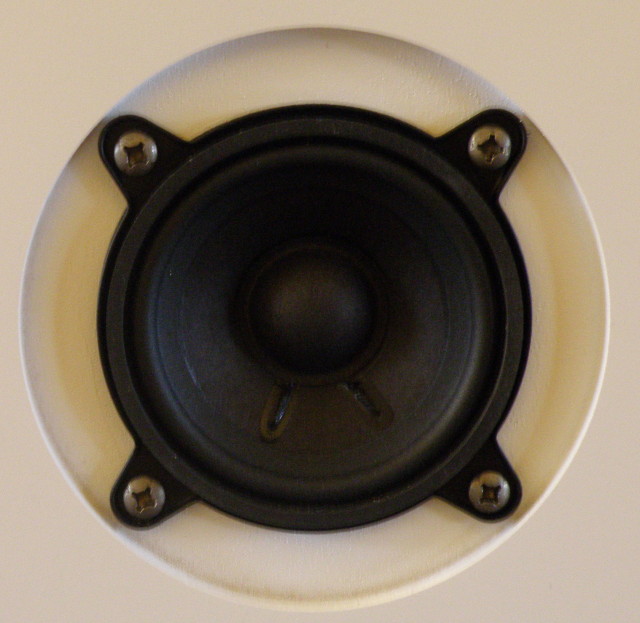 So once I got past my psychological obstacle and once I had the volume at that perfect setting for the room, I needed to seriously listen to what the speakers had to offer. Very quickly, I discovered (although I kind of knew this already) that the speakers love music with good production values. If you are interested in hearing the most intricate details of a recording session with remarkable clarity and depth, then these speakers are for you. The speakers have the tremendous ability to open up a window on what was occurring in a studio when the music was being laid down. On the other hand, if the music has (ahem) less than stellar production values, you will be made acutely aware of the limitations of the recording. For some, this may be a negative for a speaker, but for me it indicates that Finalé Audio has delivered on making speakers that are, in their own words, “true to the source.”
So once I got past my psychological obstacle and once I had the volume at that perfect setting for the room, I needed to seriously listen to what the speakers had to offer. Very quickly, I discovered (although I kind of knew this already) that the speakers love music with good production values. If you are interested in hearing the most intricate details of a recording session with remarkable clarity and depth, then these speakers are for you. The speakers have the tremendous ability to open up a window on what was occurring in a studio when the music was being laid down. On the other hand, if the music has (ahem) less than stellar production values, you will be made acutely aware of the limitations of the recording. For some, this may be a negative for a speaker, but for me it indicates that Finalé Audio has delivered on making speakers that are, in their own words, “true to the source.”
These speakers have an astonishing ability to replay jazz music. In fact, I would often listen to a record, then simply drop the needle again, and listen to the same side. There was such revelatory joy in listening with these speakers. They are voiced so well for small outfit jazz sessions that I could listen to jazz on them for a very long period of time without ever getting tired of it. They are absolutely a joy when listening to folk music because of their ability to get the crucial range of the human voice so right in its timbre and presence. Even rock and roll sounded very good on these speakers (though true rock fans will never get the punch they need from these small drivers; it’s simple physics).
Orchestral music sounded reasonably good as well, although they weren’t quite able to reproduce satisfying listening levels. The complexity of this music seemed to overwhelm the drivers and, heck, who can blame them? But Robert Gaboury hinted that there is more in store in this collaboration with Finalé Audio: “We spared no effort in building our humblest product, thinking that if you like it, you will be pleasantly surprised by our bigger models. In a word, for someone looking to reproduce large orchestral work at realistic playback levels, I’d say wait for our bigger models.” In other words, if the Vivace Mini is any indication of what is to come, this is the beginning of what will be a fruitful musical partnership.
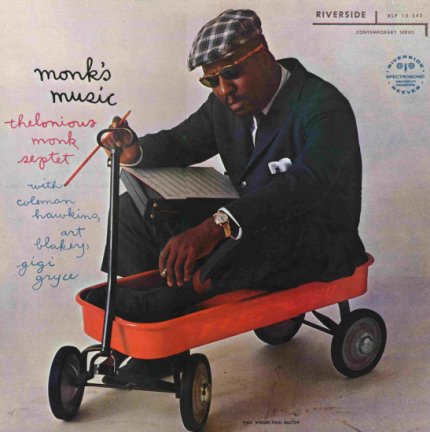 Listening to these speakers was an exercise in expansion for me. I learned to hear differently (less with my eyes and more with my ears) and was treated to a wonderful entry into the world of several recordings of especial note for me. I had the opportunity to unseal a copy of Monk’s Music pressed in 1983. There is something deeply satisfying about spinning some virgin vinyl, especially with a set of speakers like the Vivace Minis. I was already very familiar with Monk’s recording, but I wanted to see what I could hear anew. Monk’s phrasing and intonation was ridiculously transparent. His position between the speakers, off to the right and set back slightly, was apparent in the soundstage. With Blakey’s cymbal work getting a tremendous treatment by the Minis, I was able to hear the rhythmic dynamic so essential to the record develop between Ware on bass and Monk on piano. With John Coltrane and Coleman Hawkins sharing the limelight on tenor saxophone, I’ve always been amazed by how Gigi Gryce’s alto work shines. The Vivace Minis allowed me to step into this recording. For example, on Well, You Needn’t, Monk calls out “Coltrane” to signal the first chorus, and the huskiness of his voice is preserved with remarkably startling verisimilitude. Time and again, as I was listening to this record, I would close my eyes and get lost in the exchanges that were occurring. The Minis cast a soundstage that was dynamic, robust, and filled with the clearest reproduction of music I have heard in a long time. It may not have been the broadest soundstage I’ve heard, but I there was an almost golden quality to the sound that more than amply made up for its slightly smaller aural footprint.
Listening to these speakers was an exercise in expansion for me. I learned to hear differently (less with my eyes and more with my ears) and was treated to a wonderful entry into the world of several recordings of especial note for me. I had the opportunity to unseal a copy of Monk’s Music pressed in 1983. There is something deeply satisfying about spinning some virgin vinyl, especially with a set of speakers like the Vivace Minis. I was already very familiar with Monk’s recording, but I wanted to see what I could hear anew. Monk’s phrasing and intonation was ridiculously transparent. His position between the speakers, off to the right and set back slightly, was apparent in the soundstage. With Blakey’s cymbal work getting a tremendous treatment by the Minis, I was able to hear the rhythmic dynamic so essential to the record develop between Ware on bass and Monk on piano. With John Coltrane and Coleman Hawkins sharing the limelight on tenor saxophone, I’ve always been amazed by how Gigi Gryce’s alto work shines. The Vivace Minis allowed me to step into this recording. For example, on Well, You Needn’t, Monk calls out “Coltrane” to signal the first chorus, and the huskiness of his voice is preserved with remarkably startling verisimilitude. Time and again, as I was listening to this record, I would close my eyes and get lost in the exchanges that were occurring. The Minis cast a soundstage that was dynamic, robust, and filled with the clearest reproduction of music I have heard in a long time. It may not have been the broadest soundstage I’ve heard, but I there was an almost golden quality to the sound that more than amply made up for its slightly smaller aural footprint.
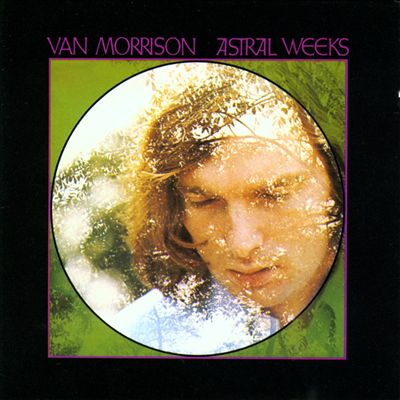 On Van Morrison’s Astral Weeks, I was blown away by two things that the Minis did. Besides a very good soundstage, besides a fantastic dynamism, they were able to reproduce the human voice without any of the shout that is traditionally associated with single point source speakers. As Gaboury indicated, the drivers were specially manufactured and treated in Italy to achieve this effect in relation to their horn-loading. But it is one thing to have someone say this and it is entirely another to hear this on a piece of well-recorded music. So the Vivace Minis got the human voice in this recording absolutely right, but, secondly, they also got absolutely right the percussion, guitar, flute, and other instruments, and did so convincingly and with authority. There was such spaciousness to the recording that it allowed me to get lost in what was happening in its grooves. The Vivace Minis got me into the recording by remaining faithful to what was there in the first place. The speakers are very transparent and from what I can tell do very little in terms of colouring what the music sounds like.
On Van Morrison’s Astral Weeks, I was blown away by two things that the Minis did. Besides a very good soundstage, besides a fantastic dynamism, they were able to reproduce the human voice without any of the shout that is traditionally associated with single point source speakers. As Gaboury indicated, the drivers were specially manufactured and treated in Italy to achieve this effect in relation to their horn-loading. But it is one thing to have someone say this and it is entirely another to hear this on a piece of well-recorded music. So the Vivace Minis got the human voice in this recording absolutely right, but, secondly, they also got absolutely right the percussion, guitar, flute, and other instruments, and did so convincingly and with authority. There was such spaciousness to the recording that it allowed me to get lost in what was happening in its grooves. The Vivace Minis got me into the recording by remaining faithful to what was there in the first place. The speakers are very transparent and from what I can tell do very little in terms of colouring what the music sounds like.
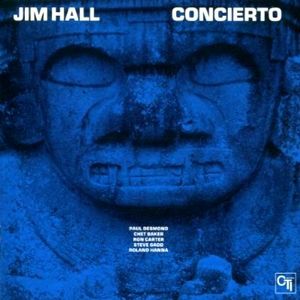 Finally, I listened to Jim Hall’s tremendous Concierto (the spectacular 40th anniversary CTI pressing), which was recommended to a friend by Robert Fulton (Saturday Night Magazine) as the only necessary jazz recording from the 1970s. That claim notwithstanding, it is a tremendous outing with Jim Hall, Paul Desmond, Chet Baker, Ron Carter, Steve Gadd, and Roland Hanna. I listened to Concierto de Aranjuez three times in a row on the Vivace Minis. Each time I was astonished by their ability to communicate the lyrical intensity of the recording, as well as the dynamic interplay between the musicians. Hall’s deft guitar playing is portrayed in its subtle glory on this recording and the Minis were capable of capturing his reserve and the elegant mastery of melody contained in the grooves. More than this, though, they communicated the musical relationships between the humans who were playing on this most magical of recordings. By being whisked away from the present and taken into the world of the record, the Vivace Minis accomplished a remarkable feat for any speaker, which is even more astonishing given their small size.
Finally, I listened to Jim Hall’s tremendous Concierto (the spectacular 40th anniversary CTI pressing), which was recommended to a friend by Robert Fulton (Saturday Night Magazine) as the only necessary jazz recording from the 1970s. That claim notwithstanding, it is a tremendous outing with Jim Hall, Paul Desmond, Chet Baker, Ron Carter, Steve Gadd, and Roland Hanna. I listened to Concierto de Aranjuez three times in a row on the Vivace Minis. Each time I was astonished by their ability to communicate the lyrical intensity of the recording, as well as the dynamic interplay between the musicians. Hall’s deft guitar playing is portrayed in its subtle glory on this recording and the Minis were capable of capturing his reserve and the elegant mastery of melody contained in the grooves. More than this, though, they communicated the musical relationships between the humans who were playing on this most magical of recordings. By being whisked away from the present and taken into the world of the record, the Vivace Minis accomplished a remarkable feat for any speaker, which is even more astonishing given their small size.
So are these speakers you should consider buying? That depends on several factors. You need excellent source electronics and ancillaries, you likely need a smaller room, and you need to be willing to hear what your records actually sound like. Also, I think it bears mentioning that have to be willing to have your friends and relatives think you are pulling their legs when you tell them that all of that sound is coming from a 2 and ¾” driver. But if you listen to a lot of rock and roll with deep thundering bass, or electronica, or need the full blast of an orchestra playing Beethoven’s “Eroica”, then you should probably look elsewhere for speakers (or wait for the bigger models coming from Finalé Audio). The Vivace Minis have been designed with a specific purpose in mind. With the right tube electronics (i.e., 2A3 parallel and push-pull amps) and the right space (smaller-sized room or condo), these speakers will give you tremendous return on your investment. Elegantly designed to fit into modern décor, while matching diminutive size with a reasonably large soundstage and incredibly refined sound, these speakers are a great prospect if you are aware of how and why they were made. The Vivace Minis are an excellent example of speakers where “hearing is believing.”
Vivace Mini MSRP: $2,500 (USD)
Web address: www.finaleaudio.com

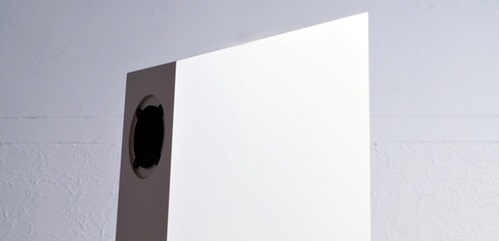
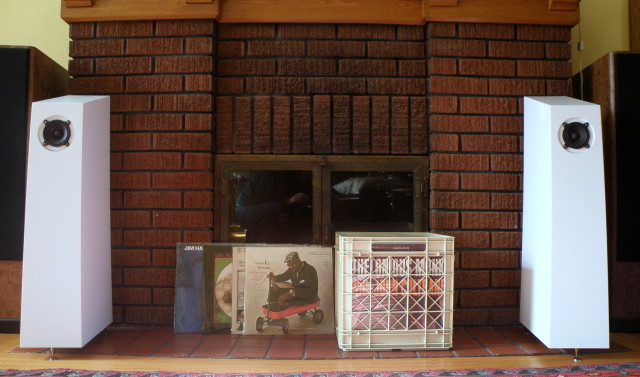
Thanks for all the info on unit cost and driver info.
Great review! I heard these speakers at TAVES 2015 and was amazed at the range of sound that came from them. Initially, I was certain that there must have been a sub-woofer behind the display, to my surprise there were no other speakers in the room. And I wasn’t the first or the last to think that.
Thanks for the comment about the review. I was often surprised by the Minis (as I hope my review conveys).
This is intriguing to say the least. I’ve been looking for a small house speaker that isn’t a monitor, to replace my Harbeth P3ESR. I wonder how these would sound with 845 tubes, specifically the Line Magnetic 518ia?
Hi Patrick,
This would be a good question for Tim, but he hasn’t heard the Vivace Mini’s. Neither Jon Eben nor I are able to comment on this, other than to reiterate that they were voiced and designed around the 2A3 sound (2 per channel). I’d suggest sending an email to Frank Ng (email at tubedeforce dot com), he’s very responsive and helpful.
Thanks for reading and commenting.
Noam
Thanks! I emailed him; I’ll follow up if I take the plunge. BTW I enjoy the reviews on this site a lot.
A very insightful and generally correct description of these beauties! I visited the Finale Audio room at TAVES 4x over the afternoon simply to escape from the distasteful sounds emanating in other rooms. Amazingly musical. I am regularly amazed by the sound coming from my 2009 version of the Gemme Audio Vivace! Unfortunately for me, they pale in comparison to the Minis. Re: waiting for Finale’s later versions, well Bigger and better are always coming along but I can’t imagine how Finale can beat the Minis at what they do. They will no doubt make something that sounds gloriously different but maybe not better than this. For me the honesty of the sound is enough…I am not sure if I’ll wait for Bigger/Better.
I have returned to this review many times over the past couple of years as I find myself being drawn into the world of tubes and jazz. I have recently purchased a new Triode Labs SET 2A3 from Noam at Stereo Untypical and it looks like I have finally tracked down a pair of Vivace Mini.
Thank you for this, and all of the other reviews on this site, I will report my findings once I get the Mini’s set up.
Thanks for everything.
Congrats Alan! Very exciting news.
Noam